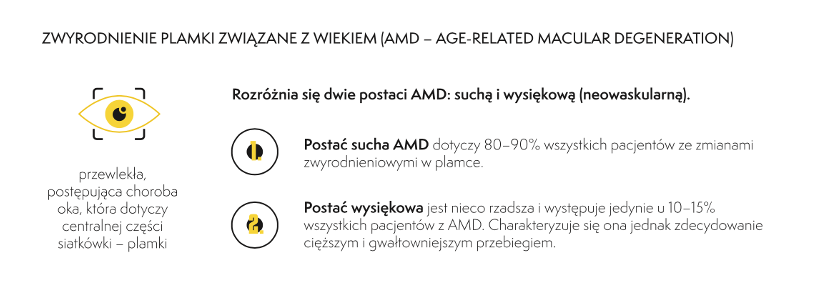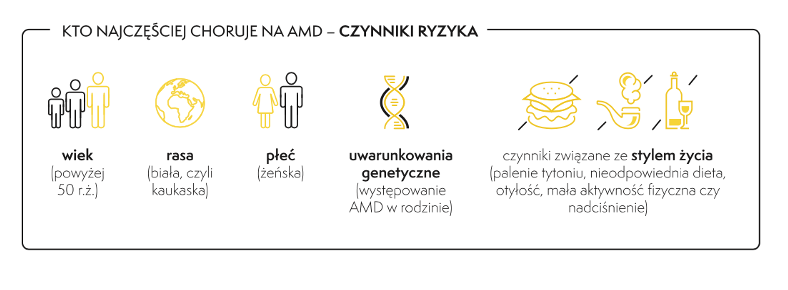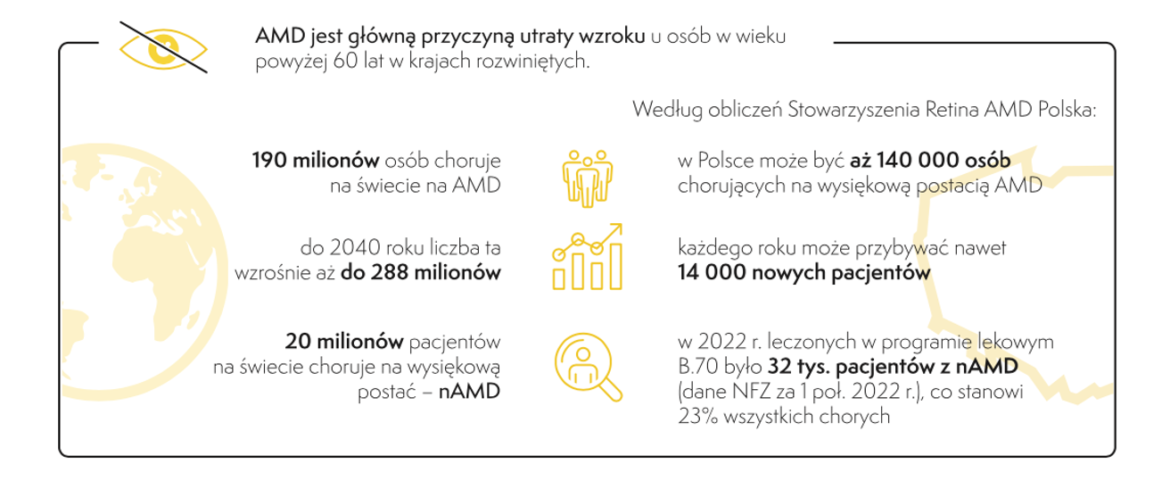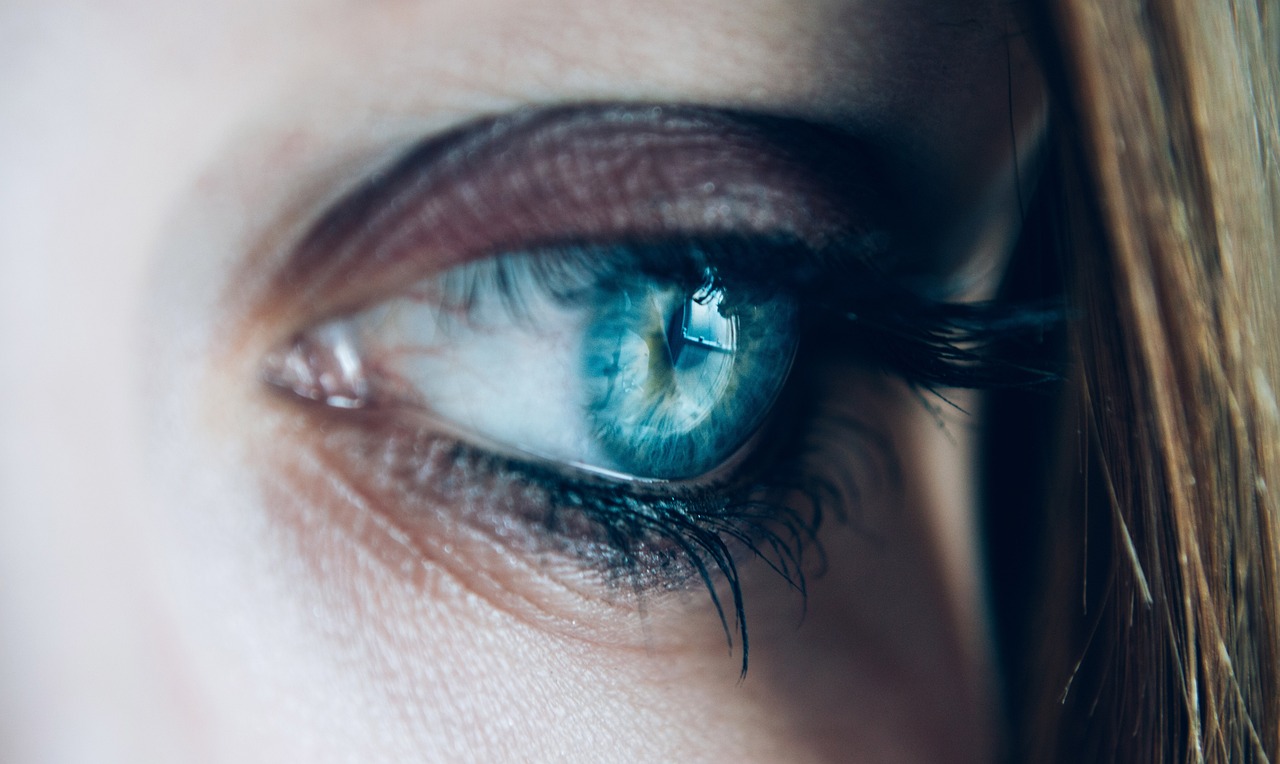On the initiative of Retina AMD Poland and the Institute for Patient Rights and Health Education, the 'Keep Your Sight' campaign was also launched in March this year. The idea behind the campaign is to provide broad education about retinal diseases such as age-related macular degeneration (AMD) and diabetic macular oedema (DME), which can cause vision loss. Campaign website www.zachowajwzrok.pl provides an insight into retinal diseases and the world as seen through the eyes of patients, and shows the patient's pathway through a map of ophthalmology centres in Poland.
Age-related macular degeneration (AMD) in developed countries is the number one cause of sight loss in people aged 60 and over. A report by the Association Retina AMD Poland "nAMD - the patient pathway from diagnosis to treatment". illuminates the picture of this disease. The publication is based on a survey of patients and doctors, in collaboration with rehabilitation specialists, medical experts and association volunteers.

AMD can take the dry or exudative (neovascular) form, with the dry form affecting 80–90% all patients with macular degenerative changes. Although there are significantly fewer patients with the exudative form (10–15%), it is in their case that the disease has a far more severe and violent course.
There are nearly 190 million AMD patients worldwide. In Poland, according to the Retina AMD Association Poland, there may be as many as 140 000 people with the exudative form of this progressive, multidimensional disabling disease. It is estimated that there will be up to 14 000 new patients each year.
Risk factors include age (over 50), race (white), gender (female), family history of AMD and unhealthy lifestyles of smoking, physical inactivity or hypertension.

What is AMD?
Macular degeneration affects the central part of the retina. As patients say, AMD is not a disease that blindingly – because a small – but still – Peripheral vision. It is primarily associated with a reduction in visual acuity. This is compounded by distortion and blurring of the image. Patients have difficulty driving, reading and even recognising faces. Blurred, fuzzy and distorted – This is what everyday life is like for patients with AMD.
The patient pathway - from diagnosis to treatment
Prompt diagnosis in nAMD is particularly important. It is an asymmetrical disease i.e. it starts in one eye. The other sees well, so patients do not know for a long time that they are losing their sight. AMD is a chronic incurable disease that can lead to loss of vision. Everything must be done to slow down its rate and for the loss of vision to be as low as possible. There is very unequal access to treatment in Poland. It is not just about small towns. An example is Warsaw, where an appointment with an ophthalmologist under the National Health Fund is a wait of many months.

Treatment of nAMD
Treatment of nAMD focuses on reducing disease activity and improving long-term visual acuity. The treatment of nAMD in Poland is at a very high level. The guidelines of the Association of Polish Ophthalmic Surgeons as well as the Polish Ophthalmological Society do not deviate from world standards and include anti-VEGF drugs administered directly into the eye.
Challenges for the future. There are many ways in which we can improve the quality and safety of life for the elderly and visually impaired, e.g. by adapting urban infrastructure through contrasting colours, providing additional light sources, technological innovations or institutional support for caregiving, assistive and psychosocial services. However, neither caregiver support nor even artificial intelligence will help if a large proportion of the population consists of visually impaired old people with multimorbidity. The costs are impossible to estimate.
Download the Retina AMD Poland Report "nAMD - the patient pathway from diagnosis to treatment" >>.
In March 2023, the 'Preserve Your Sight' campaign was launched by the Retina AMD Association and the Institute for Patient Law and Health Education, with Roche as a campaign partner. The idea behind the campaign is to provide broad education about retinal diseases such as macular degeneration (AMD) and diabetic macular oedema (DME), which can cause vision loss. The campaign materials and information tools allow people at risk and their carers to learn about the disease and the world as seen through the eyes of patients.

